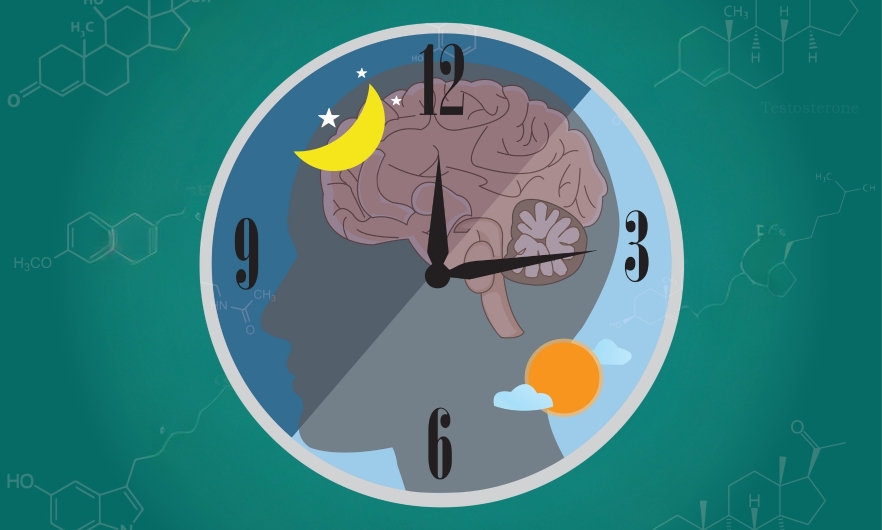Understanding Sleep, Activity, and Circadian Rhythms in Major Depressive Disorder

A new study in JAMA Psychiatry aimed to understand how sleep, physical activity, and circadian rhythms relate to major depressive disorder (MDD). The study included adults with both current MDD and those with a history of MDD but who were symptom-free at the time of the study (remitted MDD). MDD is a serious mental health disorder with symptoms that include a lack of desire to enjoy life and difficulty doing simple things like eating and being socially engaged.
The researchers found that the amount and quality of physical activity, and timing of both sleep and physical activity combined with the stability of their 24-hour circadian rhythm, was a better indicator of MDD than any of these factors individually. With this knowledge, doctors can provide potentially more efficient MDD interventions, jointly targeting these aspects of 24-hour behaviors.
In a Q&A, lead author Vadim Zipunnikov, PhD, MS, MA, associate professor in the Department of Biostatistics, answers questions about the study, which shows the importance of looking at a person’s 24-hour behaviors comprehensively.
Your study used a technology called accelerometry to measure sleep and activity. What exactly is it, and how did you use it?
An accelerometer is a sensor that measures movement. It can be used to assess intensity and duration of physical activity, the amount of movement during sleep and for other things. Built-in accelerometers can be found in devices like Fitbits and smartphones. In the study, we used a research-grade device called GeneActiv to estimate both physical activity during the day and quality of sleep during the night.
How are the research-grade devices you used similar to and different from common trackers such as Apple watches or Fitbits?
Fitbit and similar devices have photoplethysmography (PPG) sensors that estimate heart rate and heart rate variability. Having a person’s heart rate, along with accelerometry information, makes the algorithms for estimating physical activity and sleep more accurate; this is a big advantage over research-grade devices that typically only record accelerometry data. A major advantage of research-grade accelerometer devices is that researchers have a lot more control over the algorithm processing pipeline.
You found two key contributors that are both strongly associated with MDD: physical activity and the timing of sleep and physical activity. What does this mean in terms of the prevention and treatment of major depression?
We found that the amount and quality of physical activity, and the timing of sleep and physical activity, were the two most important components of 24-hour behaviors, both for people with MDD and without it. People with MDD engaged in less physical activity and it was of poorer quality (more fragmented). They also had later timing of both sleep and physical activity. Thus, late timing of sleep and physical activity, or delayed circadian rhythm, is related to a higher chance of having current or remitted depression.
We also found that people with current MDD tend to go to bed and be physically active even later than those with remitted MDD. Of course, later timing is relative to a person’s natural rhythm; for some people going to sleep at 11 p.m. naturally aligns with their internal clock, while for others it doesn’t.
Our study adds to the existing literature that shows that not staying up too late and going to sleep at a regular time, based on your body’s natural clock, may be a healthy sleep routine. And the same may be equally applied to other daily routines including physical activity.
How might these findings help clinicians treat people with MDD?
Clinically, it means that intervention approaches jointly targeting these aspects of the 24-hour behaviors may potentially be more efficient in prevention/treatment of depression and beyond. It is important to understand what healthier behaviors are within the context of depression and how we could switch the person back if or when they fall out of them.
What big questions was this study trying to answer?
What is important to understand is that people working in the field of sleep are typically focused on sleep period, and physical activity experts primarily focus on daytime physical activity. In our work, we try to better understand the interplay between sleep and physical activity, looking at them as integral parts of the 24-hour daily cycle.
In this study we focused on understanding the interdependencies between sleep, physical activity and circadian rhythms and seeing how these three domains related to current or remitted major depression. Interestingly, we learned that sleep timing, not duration, was related to MDD status, which indicates that circadian misalignment plays an important role in MDD.
Were you surprised by any of the findings of the study?
Some of the findings reconfirmed results that were previously published. That being said, our work used a novel methodological approach, which allowed us to jointly study the domains of sleep, physical activity, and circadian rhythmicity. Our approach allowed us to take a step forward, seeing which measures are closely related to each other and essentially allowing us to group these variables.
What can the general public learn from this study?
Understand your sleep, not just from a durational point of view but in terms of timing and how your sleep timing is related to the timing of other activities you do, such as physical activity. And there is no one right answer. Some people naturally stay up later or rise earlier. There is nothing wrong with either. But look at your history: Did you shift to this later timing? Additionally, any amount of physical activity takes you in the right direction, especially for those who are highly sedentary.
How does this relate to other work you’ve done using accelerometry?
Along with my colleagues at Johns Hopkins University and Motor Activity Research Consortium for Health (mMarch) at the National Institute of Mental Health (NIMH) I have been doing a lot of work to understand the role of sleep and physical activity across multiple diseases and disorders. Converging sleep and physical activity, and thinking about 24-hour behaviors jointly, is a very natural step both for me and these two fields. I think we will see more and more research approaching 24-hour behaviors in this comprehensive way of thinking.
What’s next?
This paper is based on our study in Switzerland with middle-aged to older people (the mean age was 61.79 years). Since then we have applied this approach across three continents (North America, Europe and Australia) and across the entire lifespan (from 5 to 85), and expanded to include people who experience ADHD, anxiety, and other mental health disorders. Our findings are very consistent across all three studies. Though these studies have not yet been published, we are in the process of doing so now and this will be our next step. We were really surprised in some sense to see such a consistency across continents and across lifespans.





